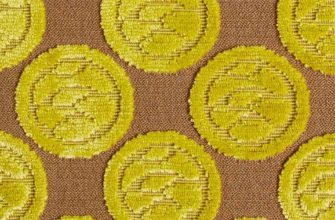Veil is a thin, translucent matte fabric. The main products of the textile industry are plain-dyed, single-color, colored material with embroidery, applique and other types of decor. Synthetic fiber is most often used to make this type of curtain manufactory. Veils on windows, doors to the balcony can be seen in private houses, apartments, offices, kindergartens, offices.
Features of the material: pros and cons
The width of the fabric is from 1.5 to 3.3 m. The fabric has increased fluidity, it is difficult to fix it on the surface of the cutting table. Curtain fabrics are cut along the thread. To do this, a small cut is made on the edge, then the master carefully pulls out the thread, the fabric is cut along the resulting tightening on the fabric.
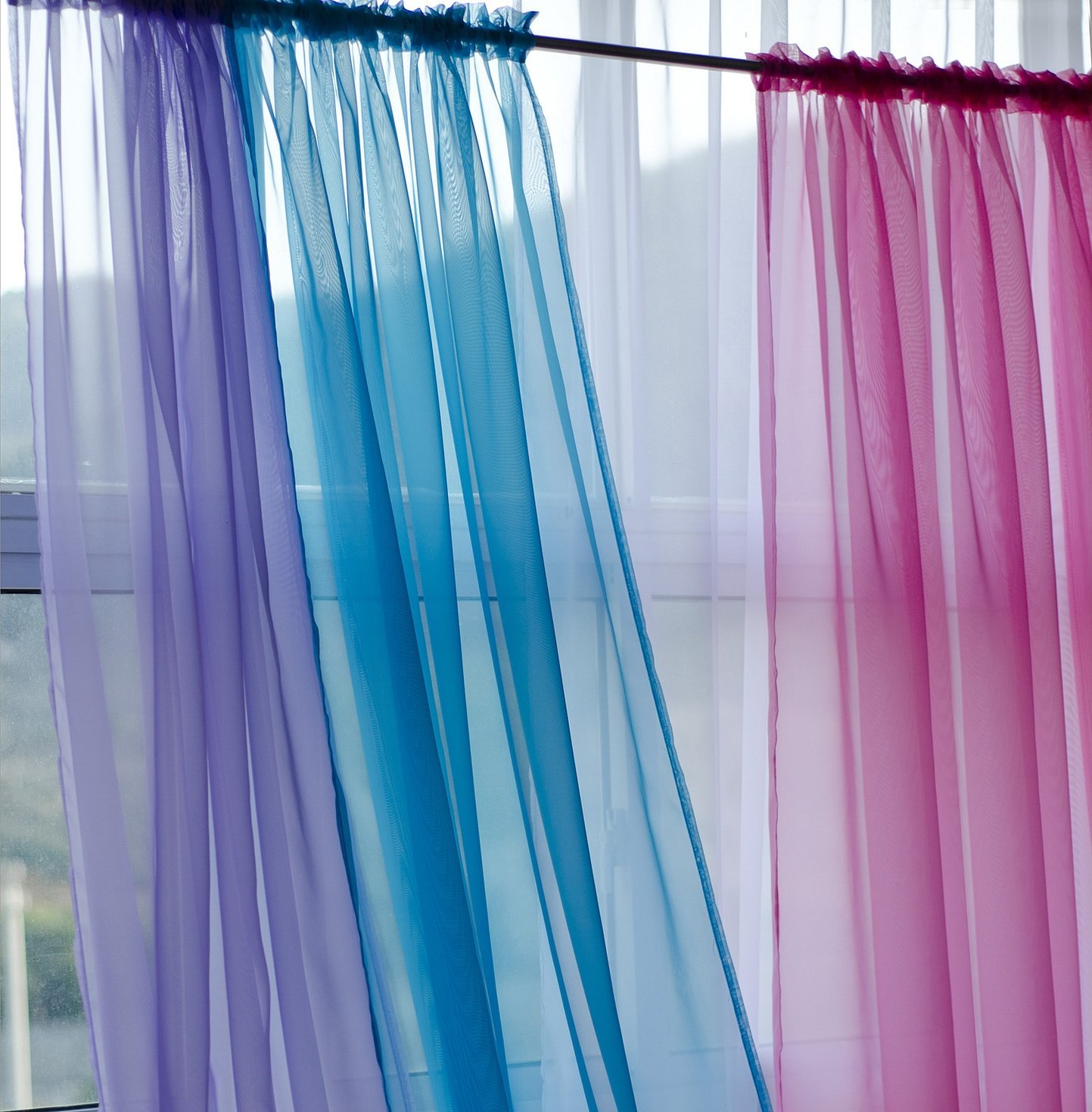
Voile fabric for curtains is widely used for making drapes and curtains in public places.
The material is popular because:
- cheapness;
- high drape;
- absence of shrinkage;
- attractive appearance.
Important! Lambrequins and draperies require a large amount of fabric. Inexpensive veils allow you to create masterpieces of curtain art at minimal cost.
The only downside to the fabric is that it creases easily. The material is difficult to iron if you wash it in a machine or just leave it crumpled.

What does a voile curtain look like?
Veil for curtains looks exquisite. Unlike organza, this material does not shine. Curtain fabric is fashionable to gather wide bow folds, statically sewn under the tape. Strict lines of a single-color veil sewn in this way give height to the room, look stylish, noble.
Please note! A lot of fabric is spent on counter folds. For a window with a 3 m cornice, 9 m of voile will be needed with a fabric width (height) of 2.8-3 m.
High-quality curtain voile is trimmed along the bottom edge with a decorative stitching, into which a lead weight is sewn. Thanks to this detail, the material hangs, forming beautiful folds.
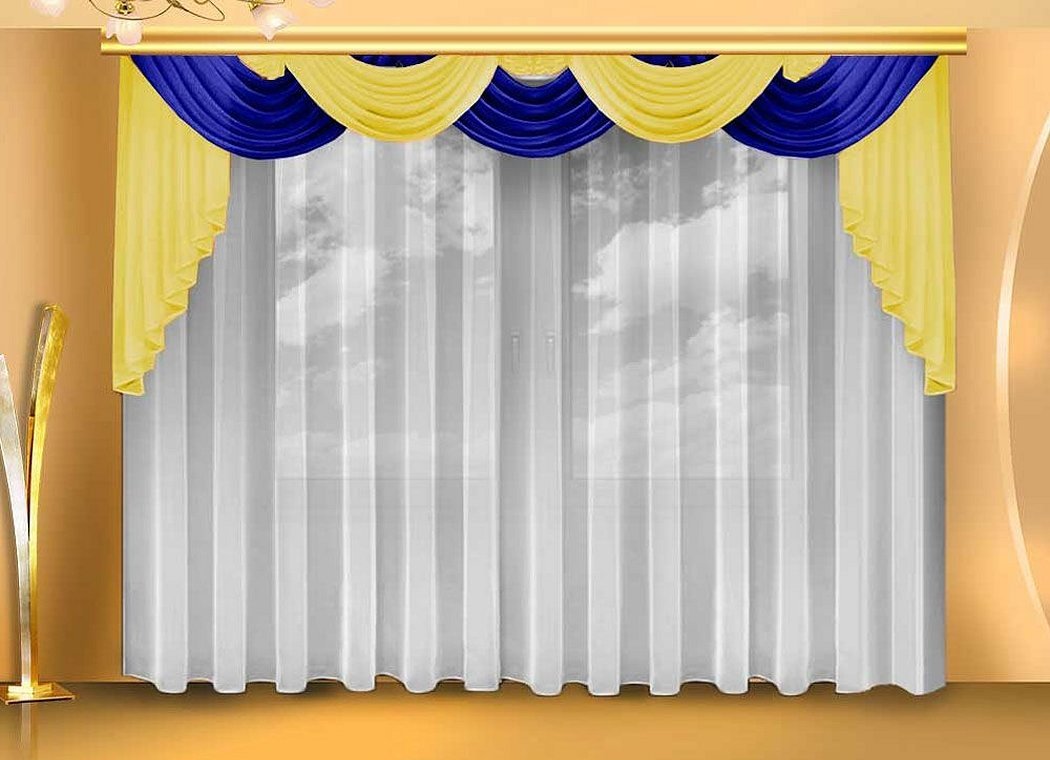
Curtain of two colors
Textile factories produce two-color models of veils intended for sewing daytime curtains. The material can have a colored bottom and a white top. Between the two edges, the active color gradually flows, dissolves, turning into light pastel tones. Models sewn from carnival (a type of veil) look especially delicate. They are often hung on the windows of bedrooms, children's rooms.
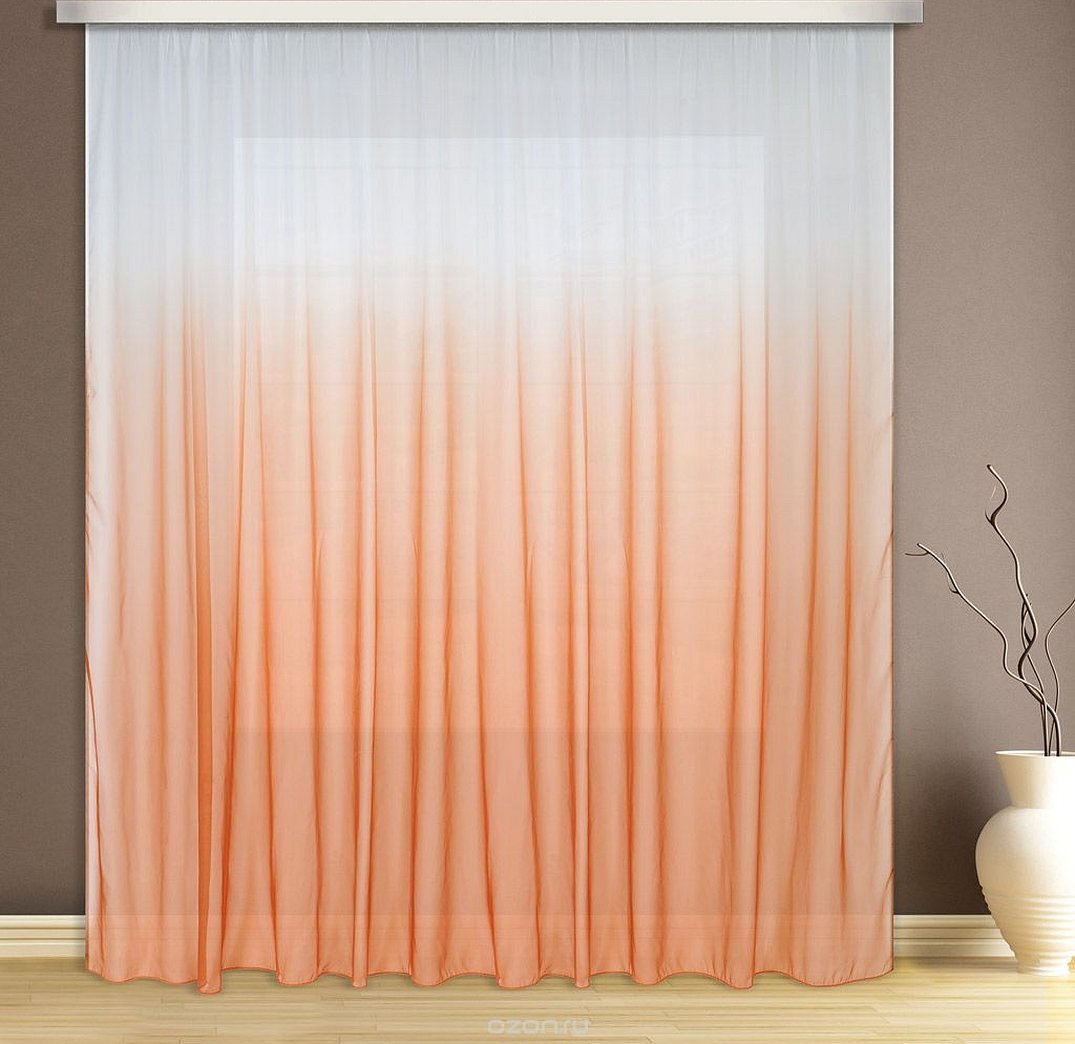
Two colors can be combined by a veil called rain. The structure of this material is woven with voluminous threads directed parallel to each other.
There are models of curtains with a weighted lower part. In such products, the skirt is finished with a wide satin or linen strip. The trim color can be any.
In addition to the listed options, the textile industry produces a large number of striped curtains. The width, color, and pattern rapport step depend on the designers' imagination. The stripes can have clear or blurred boundaries.
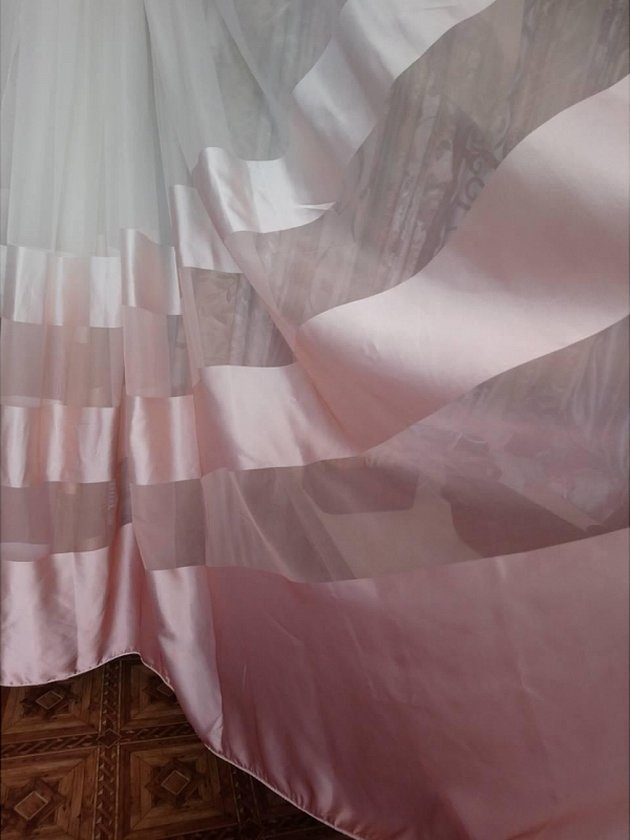
With embroidery
Embroidered veils for curtains are especially popular in the south of Russia. In northern cities, such as St. Petersburg, locals prefer discreet, plain fabrics and printed models.
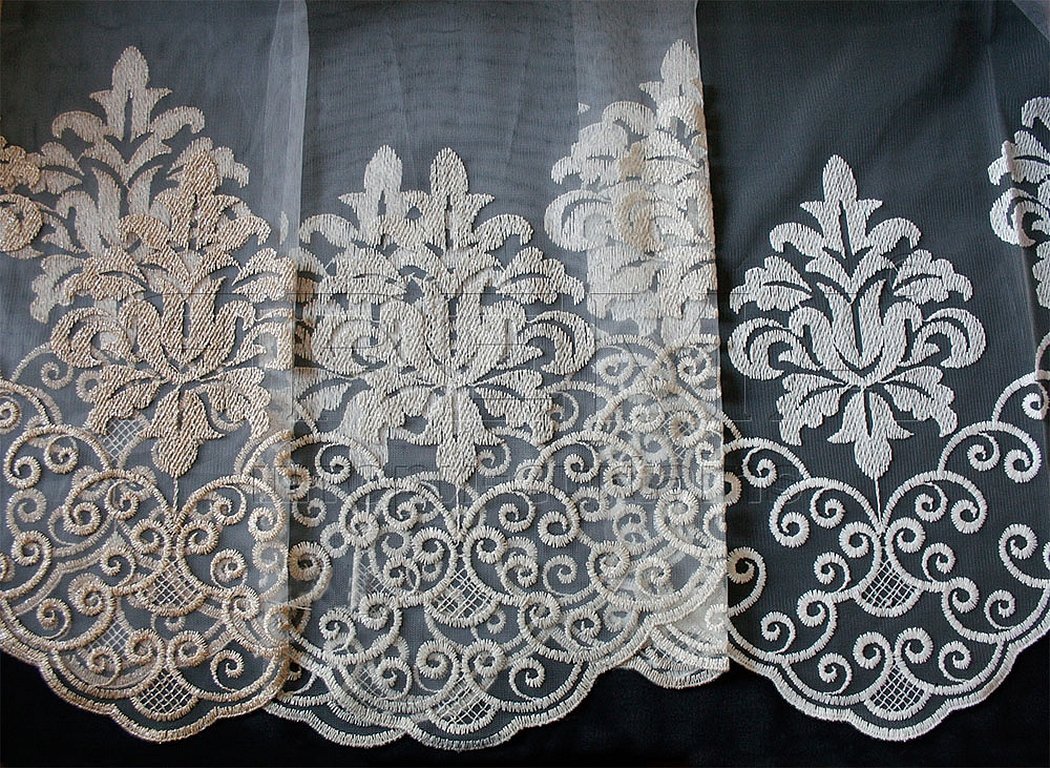
Manufacturers decorate voile curtains with different types of embroidery (satin stitch, Richelieu, slit). On sale you can find white, beige, milky models with Richelieu embroidery, made with threads of the same tone as the main fabric. Such curtains are produced in large quantities by the Verona company (Türkiye).

At one time, curtains were fashionable, which were abundantly decorated with appliques, ribbon bows, satin bottoms and embroidery. Such veils with flowers for curtains were produced by famous Turkish factories Brilliant, "Elegant". Curtain fabrics with applique sewn and voluminous flowers made of ribbons still hang in many houses.
For your information! The Indian veil is characterized by colorful satin stitch embroidery with stylized plant ornaments that completely cover the curtain fabric. Fabrics made in India are often embroidered with beads. They look like a work of art.
How to Choose Voile Curtains
White curtain fabric looks good in rooms with cool-toned wallpaper:
- blue;
- gray;
- blue;
- emerald.
White goes well with any bright contrasting color, but with beige, brown, yellow shades it looks alien. Curtains of a warm milky shade are selected for walls painted in warm tones.
It is advantageous to buy two-color curtains for rooms where there is a need to combine the colors already present in the interior. For example, a room with red upholstered furniture and green walls will no longer look ridiculous if you hang curtains with poppies on the windows. A pattern in which there is greenery on the leaves and a scarlet tone on the petals will combine the colors of the sofa and wallpaper. A veil in a two-color room can have stripes, an ornament of the same shade as the wallpaper on the wall.
Important! It is not recommended to buy dark curtains painted in brown for bedrooms. It should be remembered that thin tulle looks a couple of tones lighter on the window. The color of the curtains is best seen in the evening, when the electric lighting is on in the room.

To the kitchen
It is profitable to buy a veil for the dining room and kitchen, it washes well. Due to the cheapness of the material, kitchen curtains can be changed often. Small short arches are often sewn from thin, well-draped fabric. The bottom of the product can be finished with bias tape, lace, satin ribbon.
The model is sewn taking into account the features of the room, the location of the gas stove. The fabric can be shortened significantly on the stove side.
Modern voile curtains for the kitchen are bought taking into account the color of the furniture and walls. Although they can be the only bright spot, which the hostess will then support with a picture on the wall, dishes of the same color.
The veil for the kitchen should not be chosen to match the walls, this is a common mistake. The same fabric as the wallpaper merges with them. The window is lost, looks like a continuation of the wall.
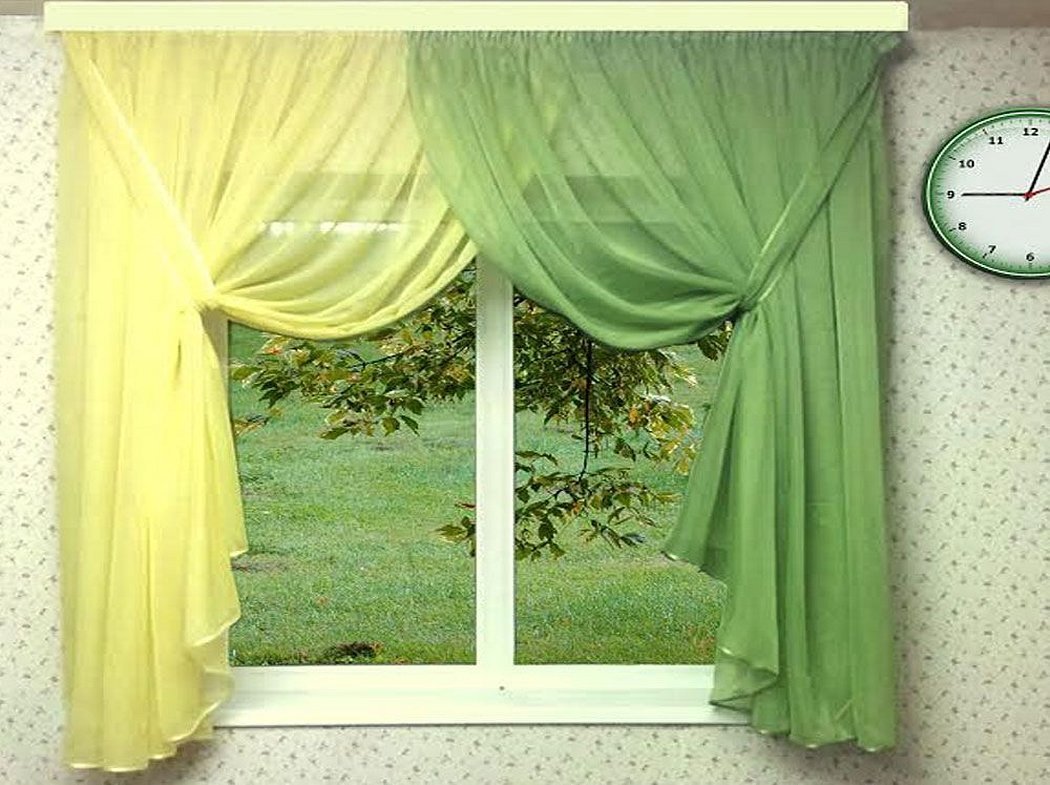
How to iron a veil
Large curtain panels made of thin fabric are ironed very carefully, having previously set the iron to the mode intended for synthetics. At high temperatures, a hole can be burned in the panel. The veil instantly melts when you try to iron it with an iron that is too hot.
There are two simple options for ironing large sheets of voile fabric. A curtain up to 5 m wide is folded several times along the length of the ironing board. The product is ironed through all layers of fabric at once. Then the creases are ironed, separately pulling the fabric towards you. It is good to iron such large surfaces together.
The second method of ironing involves the presence of a steam generator. The curtains are hung on the windows and then treated with steam.
To avoid having to iron voile curtains again, do not wash them in a washing machine. Rinse such items in the bathtub in warm soapy water. Liquid gels can be used to wash synthetic curtains.
For your information! Stains can be easily removed with regular dishwashing detergent.
After washing, rinse the curtains in cold water and hang them on a rope while wet, without wringing them out. After the water has drained, the still damp curtains can be hung on the rods right away. The fabric will dry quickly on the window, and there will be no need to iron them.
How to Make Flowers from Voile for Curtains with Your Own Hands
To make fabric flowers, small pieces of veil need to be treated with gelatin and sugar.
Description of solution preparation:
- a small packet of gelatin is poured into a glass and filled with one third cold water;
- the solution is left for 1 hour;
- after the gelatin granules have swollen, add boiling water to the glass to the brim;
- Add 1 teaspoon of sugar to the liquid and leave to cool.
The fabric is spread on a clean, flat surface. Then the warm composition is applied to the material. The processed pieces of veil are dried indoors, since dust and insects can stick to the surface outdoors.
For the pattern, you can take a rose or a peony. The flower is completely disassembled, each petal is outlined on paper. This is how a stencil is created. All the details are numbered. After the fabric dries, the petals are cut out of it.
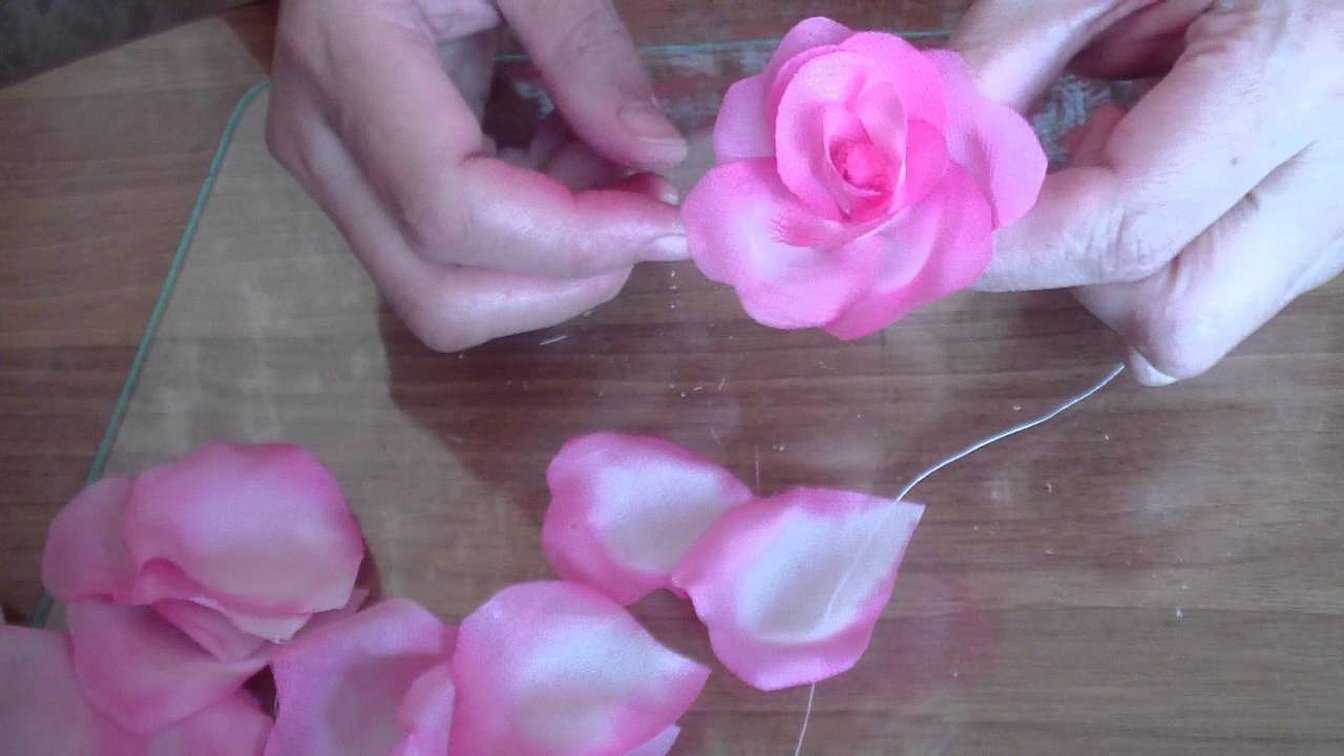
The flower assembly starts from the center. A piece of cotton wool is attached to a wire with a thread, covered with a piece of fabric like a scarf. Several turns of thread are made at the base of the bud, then the flower is extended with cut out petals. Each new detail is attached with a thread and a drop of PVA glue.
Please note! Before assembling, the petals can be shaped. To do this, lay them on a sand cushion and press them in the middle with a heated spoon. The device must have a wooden handle, otherwise you can burn your hands. From the finished flowers, you can assemble bouquets for curtain tiebacks.
Veil is widely used by designers to create delicate, elegant draperies on windows and interior decorations. The fabric obediently lies down, taking the desired shape in swags and cascades. The material has many advantages. The only disadvantage of veil is its wrinkling.



